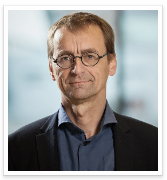
16. May 2024
Putin visits Xi: Russia and China call for a buffer zone for nuclear powers - WELT
16. May 2024
'Priority partners': Xi Jinping and Vladimir Putin hit out at US in China-Russia show of solidarity | South China Morning Post
16. May 2024
Bundestag hebt Immunitat des AfD-Abgeordneten Hannes Gnauck auf - WELT
16. May 2024
Markets are underestimating geopolitical risk, ECB's De Guindos says
16. May 2024
A Chinese 'asset'? Philippines raises alarm over mystery mayor suspected of links to Pogos | South China Morning Post
16. May 2024
Coastguards can detain trespassers without trial, says Beijing as activists converge on Scarborough Shoal in the South China Sea | South China Morning Post16. May 2024 - Articles
Washington's focus on inflation and the federal budget deficit will soon become the EU's biggest problem as generosity fades14. May 2024 - Articles
USA: Demographics, 'significant de-risking', and military build-up will amplify inflationary pressures in the coming quarters and years14. May 2024 - Articles
British labour market report underscores European central banks' lack of room for manoeuvre13. May 2024 - Articles
'Xi Jinping's China' is becoming more visible on the horizon in the West. This gives rise to concern in the EU8. May 2024 - Articles
Due to Ascension Day, there will be no update on May 9 and May 108. May 2024 - Articles
Due to Whit Monday, there will be no update on May 20
 In Denmark, Sweden and the rest of Europe, quantitative easing, also called money-printing, has not triggered much public debate. This is because most stakeholders have reaped the benefits, not least institutional investors, wealthy individuals, people with large pension savings and the public sector [zero cost of funding]. Furthermore, homeowners have benefited from historically low mortgage rates and, consequently, higher house prices.
In Denmark, Sweden and the rest of Europe, quantitative easing, also called money-printing, has not triggered much public debate. This is because most stakeholders have reaped the benefits, not least institutional investors, wealthy individuals, people with large pension savings and the public sector [zero cost of funding]. Furthermore, homeowners have benefited from historically low mortgage rates and, consequently, higher house prices. Torben M Andersen is a fellow at international research centres, including CEPR, London, IZA, Bonn, and CES Ifo, Munich. He has been actively involved in giving policy advice in Denmark, the other Nordic countries, a number of other countries as well as the EU Commission. Among other activities, Torben M Andersen has been the chairman of the Danish Economic Council and the Welfare Commission, a member of the Danish Systemic Risk Council and vice-chair of the Swedish Fiscal Policy Council. Currently, he is among other things Chairman of the Economic Council for Greenland, member of the Economic Policy Council of Finland and the European Economic Advisory Group, Munich.
Torben M Andersen is a fellow at international research centres, including CEPR, London, IZA, Bonn, and CES Ifo, Munich. He has been actively involved in giving policy advice in Denmark, the other Nordic countries, a number of other countries as well as the EU Commission. Among other activities, Torben M Andersen has been the chairman of the Danish Economic Council and the Welfare Commission, a member of the Danish Systemic Risk Council and vice-chair of the Swedish Fiscal Policy Council. Currently, he is among other things Chairman of the Economic Council for Greenland, member of the Economic Policy Council of Finland and the European Economic Advisory Group, Munich.